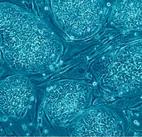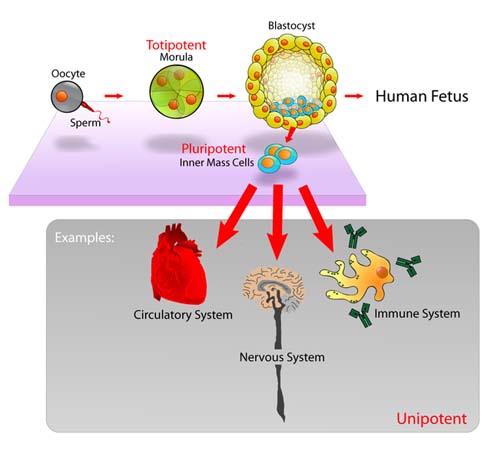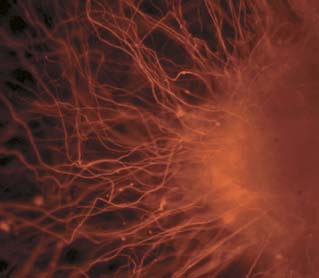 | ||||
Types of Human Stem Cells:
Embryonic, Umbilical Cord Blood & Adult Hematopoietic
When a stem cell divides, each new cell can either remain a stem cell or specialize into another type of cell, such as a muscle cell, skin cell, or red blood cell, to name just a few possibilities. These cells can theoretically divide without limit to replenish other damaged cells, and in doing so, can potentially act as a repair system for the body. Therefore, stem cell research is of great interest to the medical community.
Article Summary: These special somatic cells are primitive, undeveloped research darlings that have the remarkable potential to differentiate into many different cell types.
Types of Human Stem Cells
Neurons derived from embryonic stem cells
Embryonic Stem Cells
As their name suggests, this type of stem cell is derived from embryos. Embryonic stem cells are obtained from donated embryos that have developed from eggs fertilized in vitro (in the lab).
Embryonic stem cells have a potentially unlimited capacity to replenish themselves and are pluripotent, meaning that they can differentiate into any cell type found in the adult body. Embryonic stem cell therapies have been proposed for regenerative medicine and tissue replacement after injury or disease.
Pluripotent, embryonic stem cells originate as inner mass cells within a blastocyst. The stem cells can become any tissue in the body, excluding a placenta. Only the morula's cells are totipotent, able to become all tissues and a placenta.
When a stem cell divides, each new cell can either remain a stem cell or specialize into another type of cell, such as a muscle cell, skin cell, or red blood cell, to name just a few possibilities.
SPO VIRTUAL CLASSROOMS
 | ||||||
Page last updated 1/2016
These cells can theoretically divide without limit to replenish other damaged cells, and in doing so, can act as a repair system for the body. That's why stem cell research is of great interest to the medical community.
The Virtual Cell Biology Classroom provides a wide range of free educational resources including Power Point Lectures, Study Guides, Review Questions and Practice Test Questions.




